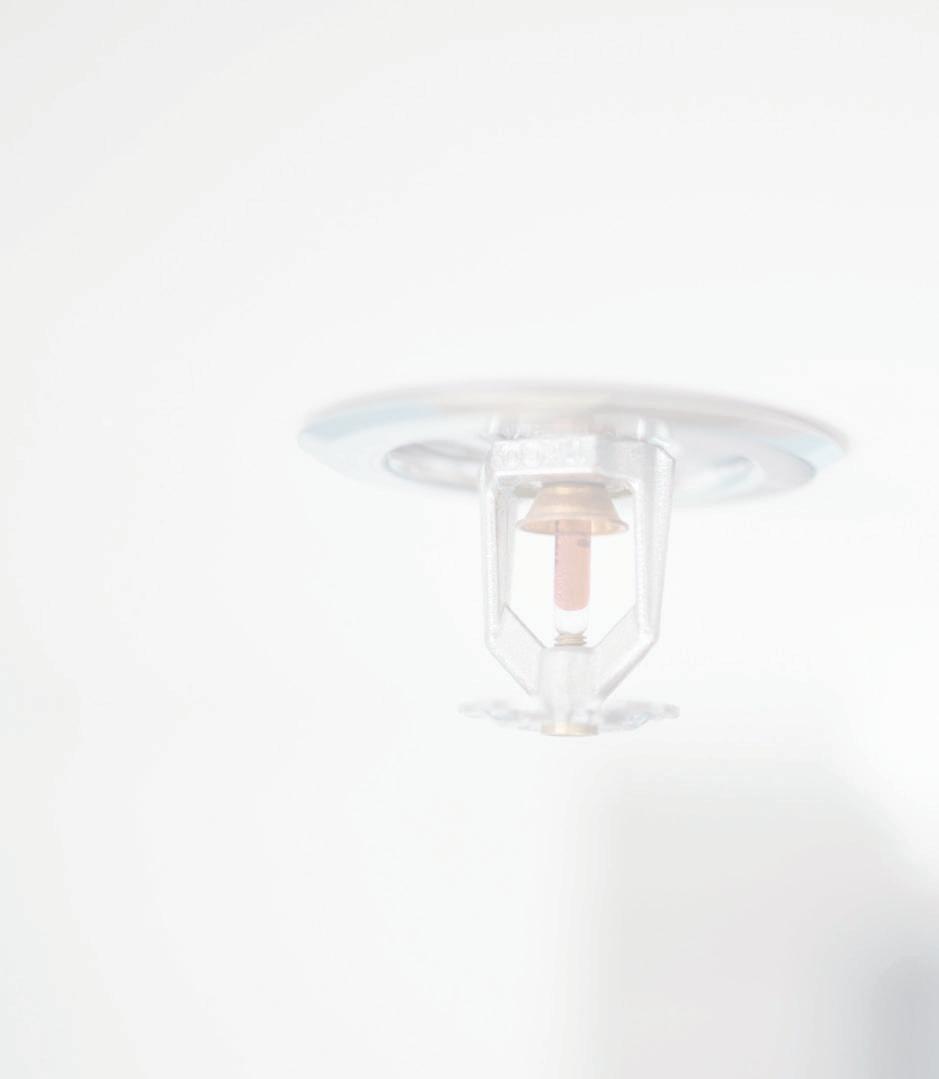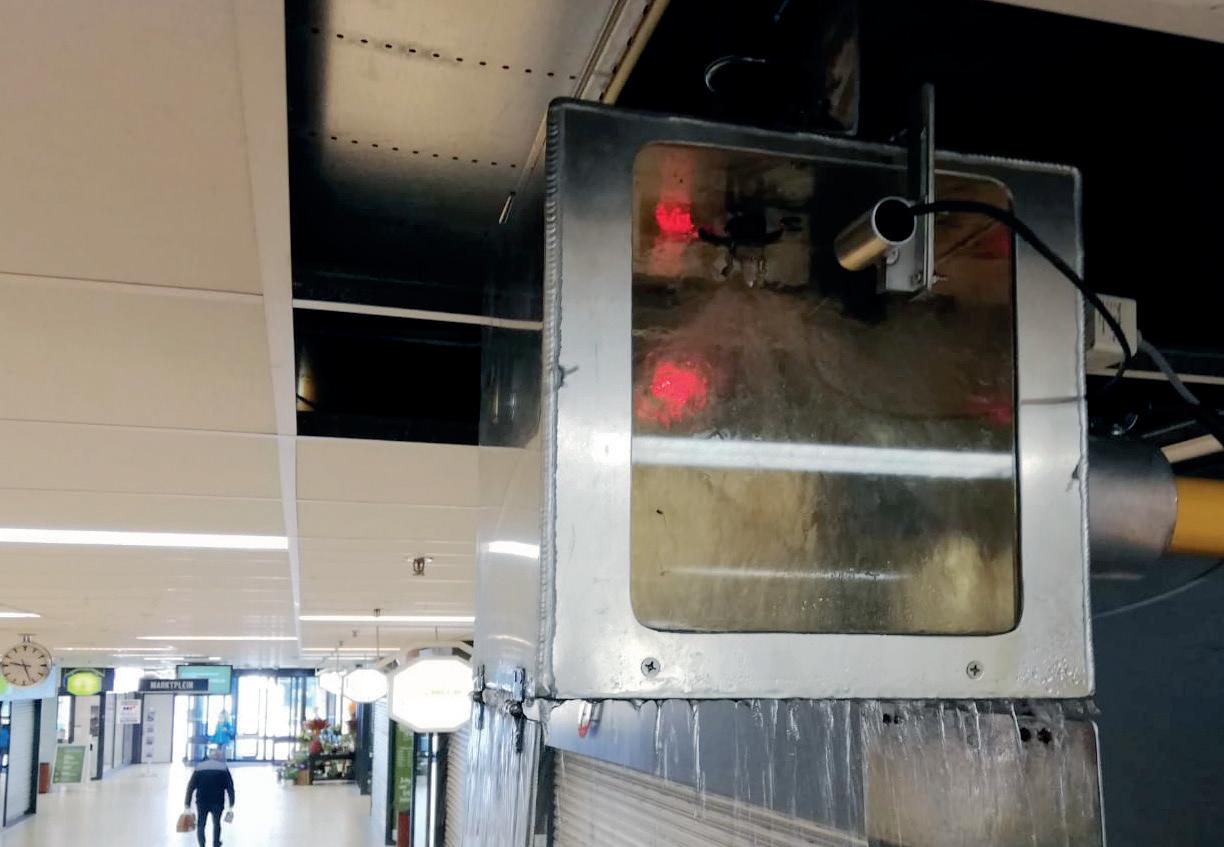
8 minute read
Dispelling common myths

Construction of new data centres and cold storage warehouses across the Middle East has raised questions about corrosion, which has long been the enemy of the dry and pre-action sprinkler systems that protect these spaces. Nitrogen as a supervisory gas was once considered an innovative way to reduce corrosion but has now become commonplace across the US and Europe. However, some in the region still have questions. Now Blake Tyler of Potter Electric endeavours to bust some common myths surrounding the use of nitrogen generators to combat corrosion and help further diminish the threat that corrosion presents in fire sprinkler systems everywhere.
The use of nitrogen in fire sprinkler systems has risen dramatically over the past decade with positive results. However, the process and products used to generate and deliver nitrogen can sometimes be cause for some apprehension. Having concerns is certainly not unusual when a new technology disrupts a long-standing traditional method. But whether you regard it as due diligence, or genuine scepticism, the myths that exist need to be addressed. These conversations are all part of the process and help to produce a better end-result.
The science behind nitrogen and its benefits in fire protection systems is simple. Nitrogen is a very stable inert gas when used in sprinkler systems. The term “inert” refers to its resistance or inability to react to what it encounters. Conditions are perfect for corrosion to occur inside the piping of a typical dry or pre-action sprinkler system.
Just like the fire triangle which requires heat, fuel and oxygen to support combustion, corrosion also needs three things : iron, oxygen, and water. Simply put, oxygen present inside the system reacts readily with the iron in the pipe, while the water helps the process occur. Once that process begins, corrosion thrives. But when the oxygen present in the air inside the piping is replaced with
an inert gas like nitrogen, the corrosion process can no longer be supported.
The concept may be simple, but the process of producing nitrogen and getting it into a sprinkler system could seem intimidating to some. The application of the technology is what often raises questions. However, time, research, and real-world experience have provided answers to many of these questions. Below are five of the most common myths and misunderstandings that occur, along with information to help put these fears to rest.
Myth
Nitrogen use is hazardous
RESPONSE Concerns about safety are always taken seriously. But in this case, there’s nothing to worry about. There are usually two aspects regarding safety and nitrogen use, and both deserve attention.
The first involves the safety of those working on or around the nitrogen generator and/or the sprinkler system using nitrogen. From a pure toxicity perspective, the answer is easy – nitrogen gas is non-toxic. Which is a good thing since the air we breathe on earth is made up of about 78% nitrogen. Like other inert, but non-toxic gasses, the risk lies in the potential for oxygen depletion if nitrogen is released in large enough quantities in a confined space. This is highly unlikely with the low volumes and pressures that nitrogen generators produce. Basic precautions such as ensuring adequate ventilation are typically recommended by manufacturers.
Often the hazards considered to be associated with nitrogen are a result of past experiences with compressed nitrogen in bottles or from liquid nitrogen. Compressed nitrogen comes with the same risk as any high-pressure cylinder. They must be secured against tipping and other physical damage to prevent a catastrophic “launching” of the cylinder itself. Liquid nitrogen is extremely cold, with a boiling point of-196°C. Because of that low temperature, nitrogen from a liquid source tends to settle into low areas, potentially increasing the asphyxiation risk. Neither of these hazards are present with the use of nitrogen generators.
The second part of this myth involves the flammability of nitrogen. Obviously, any material used in conjunction with a fire protection system must not worsen the fire it was designed to control. And that is certainly the case with nitrogen. In fact, nitrogen is used in many systems, including aircraft fuel systems, to reduce the risk of fire. The same characteristics that make it valuable for the prevention of corrosion – its ability to displace oxygen – also make it useful in preventing fires.
Myth
Nitrogen generators are expensive, especially compared to traditional air compressors
RESPONSE Cost is always a concern, but when the benefits of nitrogen generators are weighed, their overwhelming value becomes apparent.
There’s no doubt that the up-front cost of a nitrogen generator as compared to an off-the-shelf air compressor is higher. But that’s not an even comparison. Now that nitrogen generator technology has existed for an extended period, and we have been able to witness first-hand the value of replacing the corrosive oxygen with an inert gas in sprinkler systems, we are able to quantify these money savings to address this myth.
Value means something different to everyone. If you ask a facility manager what brings them value in terms of their fire protection systems, they will likely respond with increased reliability and decreased maintenance issues. Both are areas where nitrogen generators are an asset. Water delivery time is an important factor in the success of a dry or pre-action sprinkler system in terms of suppressing a fire, and corrosion inside the pipe slows that water delivery, and in some instances, can completely block it. A study by NFPA in 2014 revealed that, although sprinkler systems are very reliable overall (about 96% of the time), when they activate but fail to control the fire, 18% of those cases are due to not enough water being released. Corrosion inside the pipe is certainly a factor in many of these instances.
Sprinkler system maintenance is another big concern facility managers have. Of all building systems, maintenance issues with sprinkler systems, especially impairments due to pipe replacement and other corrosion-related problems, can have some of the most catastrophic results. Whether it’s losses from fires occurring during a system shut down or system failures that can cause substantial water damage, the value of nitrogen in limiting down time and structural pipe failures is significant. A recent study of nitrogen use in dry and pre-action systems shows an expected lifespan increase by a factor greater than five times. When considering those lifespan increases over a 60-year period, the cost savings from using nitrogen in lieu of compressed air is typically in the hundreds of thousands of Euros from maintenance alone.
Myth
Maintaining nitrogen generators is difficult and costly
RESPONSE Not true, even when compared to traditional methods of supplying supervisory gas. Modern nitrogen generators, like Potter’s IntelliGen series generators, are very low maintenance and the maintenance that is required is simple and intuitive. In most cases, coalescing filters clean the air before it enters the generator unit. Typical annual maintenance includes changing these filters, which is a straightforward process in most cases.
What sets a nitrogen generator apart from a standard air compressor is, of course, its ability to produce nitrogen. The most common, and lowest maintenance method of generating nitrogen is to remove it from the air using a membrane. Air from an air compressor enters the membrane after passing through the coalescing filters. As it passes through, everything except the nitrogen is stripped away. These membranes are designed to be maintenance free, can dry out if they get wet, and have an average lifespan of more than a decade with normal use. There are other methods of generating
nitrogen, namely pressure swing absorption or PSA. But this method entails more moving parts and has more required maintenance.
Besides routine maintenance like filter changes, the only other maintenance typically required is on the air compressor used by the generator. Most of the time, these air compressors are high quality and paired with the generator at the factory. Regular compressor maintenance (filters, belts, oil, etc.) can be expected, but as with the coalescing filters, is usually a part of the facility manager’s regular preventive maintenance programme. The remaining elements of the nitrogen generator are electronic components that control the process, and valves. Both need very little routine maintenance.
Myth
Nitrogen doesn’t make that much difference
RESPONSE False. Nitrogen as a supervisory gas in dry and pre-action sprinkler systems has been proven time and time again to prevent corrosion.
Nitrogen generators are specified by most fire protection engineers because of the dramatic impact they have on increasing system life and decreasing maintenance. As discussed above, the piping of dry and pre-action sprinkler systems creates near perfect conditions for corrosion. Nitrogen supplied by a generator represents a simple, cost-effective, proven solution for disrupting that corrosive process.
Myth
Nitrogen generators are only helpful on new systems
RESPONSE Not true. Although nitrogen can’t reverse corrosion that has already occurred, it can slow the process that is ongoing, and help prevent additional corrosion from getting started.
The best case is one where a dry or pre-action system has used nitrogen for supervisory gas since it was first installed but retrofitting a nitrogen generator onto an existing system is always a good option.
Sprinkler systems begin corroding almost immediately, and typical air compressors just exacerbate the problem by continuously reintroducing new, moist, oxygenated air into the piping. The sooner that process can be stopped, the longer the system will last.
Take a scenario where piping is severely corroded, and pieces are being replaced on a regular basis due to leaks. Once a nitrogen generator is installed on that system, the amount of pipe needing replacement decreases exponentially, and eventually may even stop. Alternatively, without changing to nitrogen, it would be a never-ending process of pipe replacement.













